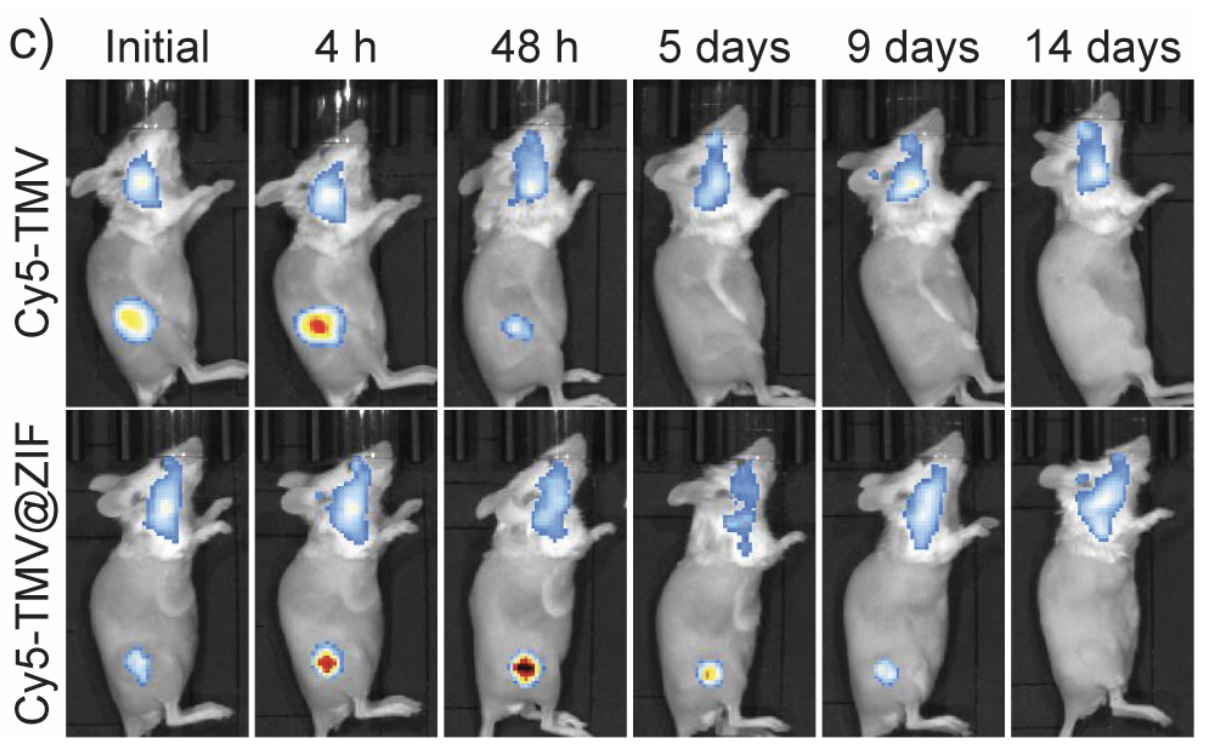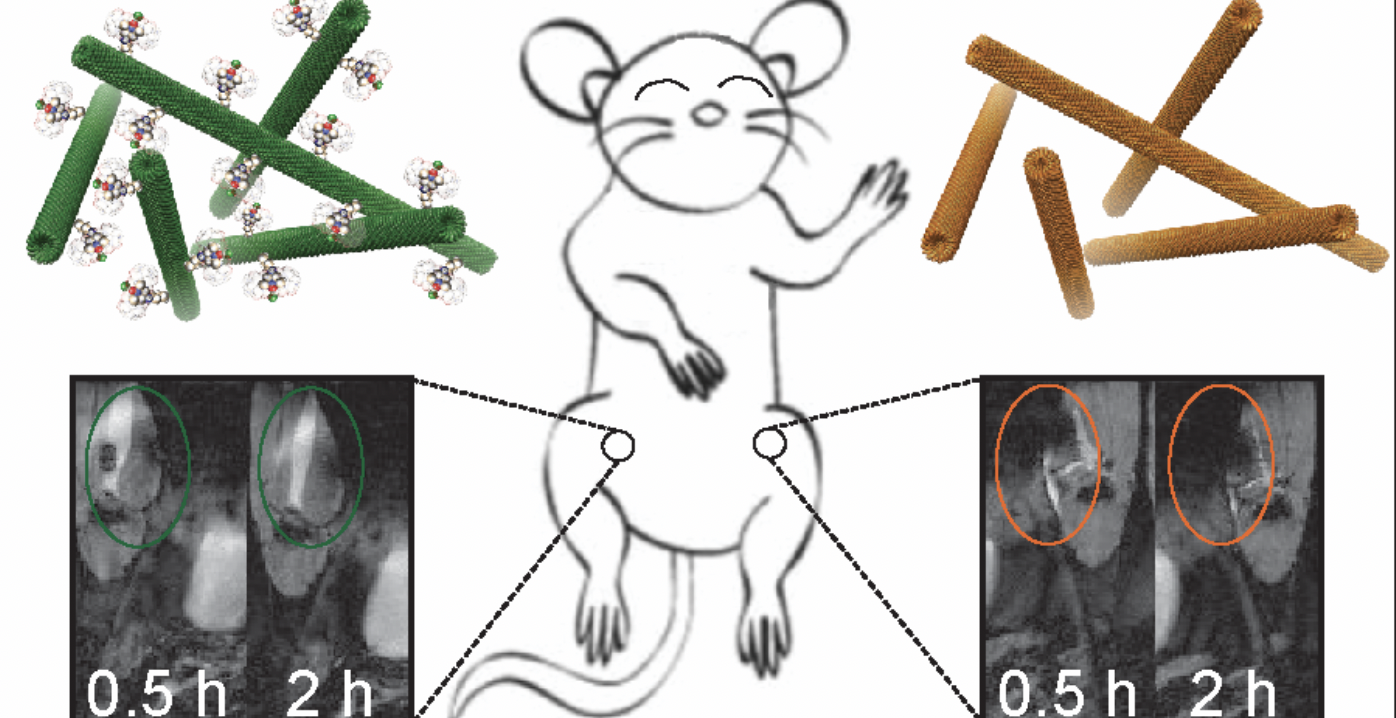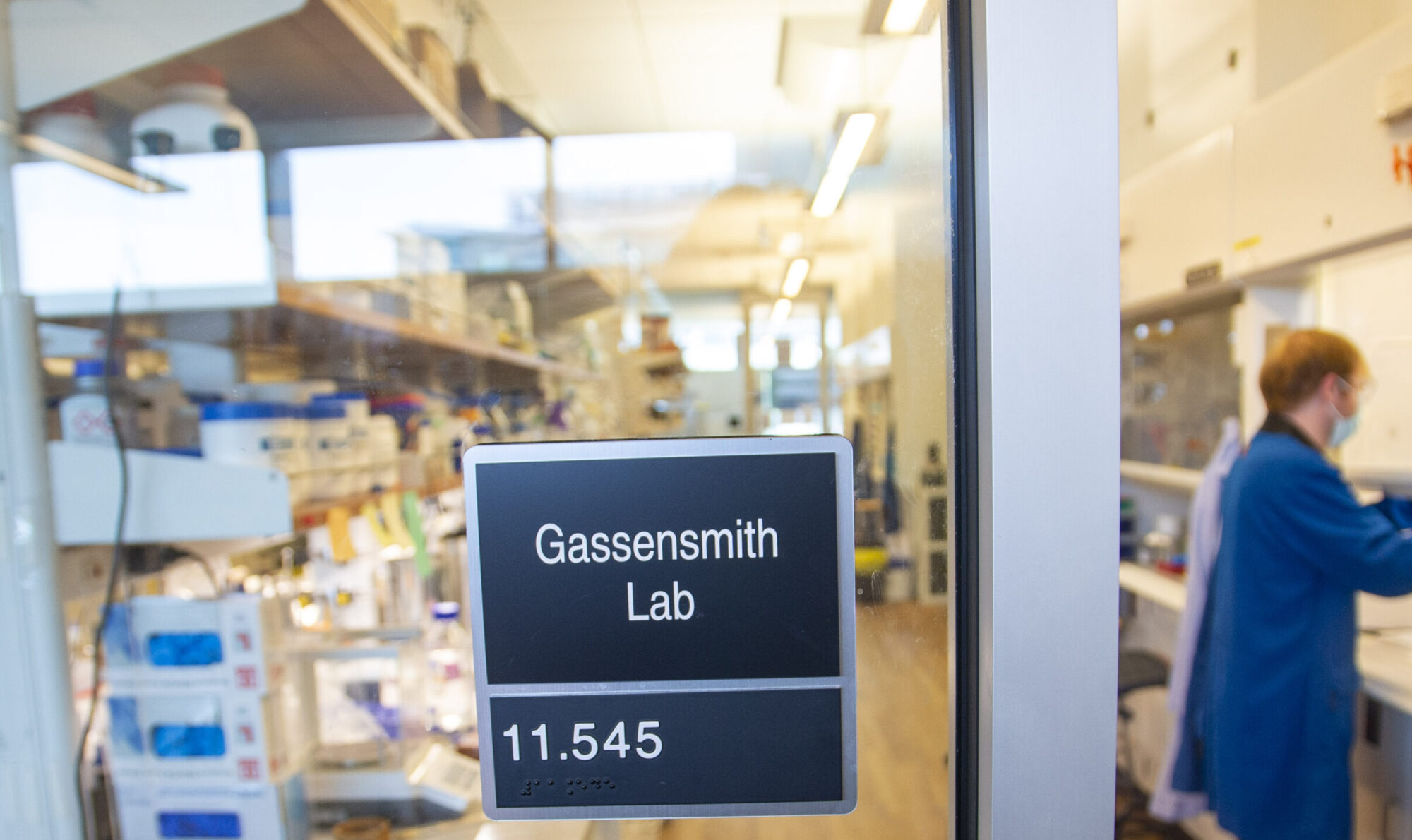We are using well-defined nano- and micro-porous crystalline materials that nucleate and grow rapidly on protein, lipid, and nucleic acid surfaces to create implantable or injectable composites for long-term protein delivery.

Vaccines have saved a lot of lives, but they are by no means perfect. In particular, they require constant refrigeration and may require multiple injections prior to exerting their therapeutic effect. Both these conditions greatly increase the cost of vaccines and inhibit access to these lifesaving medicines in developing nations. We have found that we can grow polycrystalline shells of a metal-organic framework (MOF) called Zeolitic Imidazolate Frameworks-8 (ZIF-8) on the surface of nearly any protein and that, while in these shells, the protein is thermally stabilized. The ZIF framework prevents the protein from moving, which inhibits its denaturation. We have found that ZIF-8 is capable of dissolving in tissue and in serum causing the entrapped protein to be released. We have further found that subcutaneous implants of ZIF encapsulated protein result instead release of the protein with no apparent burst release. In the case of vaccine-like therapeutics, we have found an adjuvant effect, which amplifies greatly the result of the vaccine. We aim to translate this technology to create “room temperature stable” and “single dose” vaccines—or vaccines that do not require follow-up booster shots. These could ultimately lead to greater patient compliance and thus much broader protection against dangerous pathogens for society in general.
Click a Reference to view details and access PDF or publisher website: Angew Chem Int Ed 2016; ACS Nano 2021; Nature Comms 2021; Chem Sci 2022; Proc. Natl. Acd. Sci 2023
We are making “smart” materials out of proteins and small molecules that respond to external sources such as light and heat by chemically modifying them.

Virus-Like Particles are engineered protein nanoparticles derived from viruses. Unlike viruses, however, they lack a genome and are incapable of infecting anything. Still, they retain the stability and resilience against heat and solvent of their native protein making them tough proteins and ideal nanoparticles for developing into “smart” therapeutics. We are interested in modifying tightly organized self-assembled protein structures called Virus-Like Particles (VLPs) with organic or inorganic ligands that, when acted upon by light or heat, cause changes in how the protein behaves. In particular, we are interested in attaching a photothermal antenna, which converts light into heat, to change or unfold proteins to release small molecule drugs in highly localized places. We are also interested in using light and heat to alter the surface charge of these proteins. We have found that we can install small organic molecules that change how well our VLPs are taken in by cells.
Click a Reference to view details and access PDF or publisher website: J. Am. Chem. Soc 2018; Small 2016; Mol. Pharm 2018; J. Am. Chem. Soci 2021.
We are developing a new type of supramolecular/macromolecular organic radical contrast agent for Magnetic Resonance Imaging

Gadolinium-based contrast agents have dominated clinical contrast-enhanced MRI for decades. Gadolinium is an outstanding metal for T1 enhanced contract, but it has drawbacks. In particular, it is toxic to a non-negligible number of patients. More alarmingly, its use has resulted in the accumulation of Gd in watersheds, aquatic life, and soils in urban areas from patients excreting it following imaging. We are developing an alternative based on paramagnetic organic radicals, which are typically weak contrast agents that are easily reduced to diamagnetic radicals in vivo. We have developed a method to overcome these obstacles by attaching the organic radical contrast agent (ORCA) onto a large macromolecule (a Tobacco Mosaic Virus) which increases its contrast by an order of magnitude. We use a supramolecular shielding strategy using a cucurbituril macrocycle to protect the radical from reduction yet allow water access. The resulting supramolecular/macromolecular organic radical contrast agent (SMORCA) is a persistent and bright T1 agent for in vivo imaging.
Click a Reference to view details and access PDF or publisher website: Mol Pharm 2018; Chem. Sci. 2020
American Diversity and Global Mentorship
A vital aspect of science is communication—not just amongst fellow scientists, but to the wider world. The University of Texas at Dallas is one of the most diverse universities in the United States thanks to that the DFW metropolitan area’s expanding population of first and second-generation families from around the world. We are capitalizing on this diversity to promote science in our group and beyond to the world. Thanks to funding from the National Science Foundation we have been making high-quality videos in different languages to showcase common laboratory techniques. Each year, we aim to add another language to the mix and to diversify the types of instructional videos we offer. Our primary target would be young students in international universities looking for instructional videos to help them perform common laboratory techniques with the aim of possibly enticing them to come to the United States to continue their education and contribute to our growth in science and industry.

